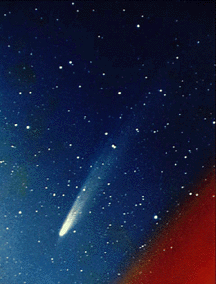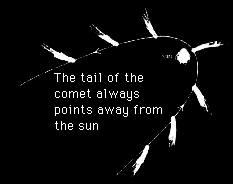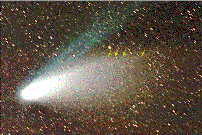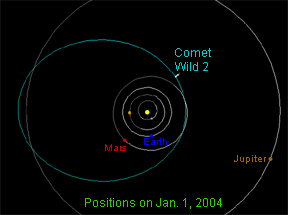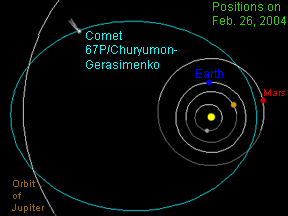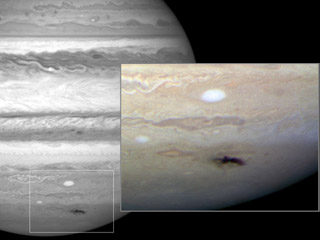Click on image for full size
NASA
Comets
Not long ago, many people thought that comets were a sign that something bad was about to happen to them. People didn't understand how objects in the sky moved, so the sight of a comet must have been very disturbing. There are many historical records and works of art which record the appearance of comets and link them with terrible events such as wars or plagues.
Now we know that comets are lumps of ice and dust that periodically come into the center of the solar system from somewhere in its outer reaches, and that some comets make repeated trips. When comets get close enough to the Sun, heat makes them start to evaporate. Jets of gas and dust form long tails that we can see from Earth. These tails can sometimes be millions of miles long.
In 1985-1986, a spacecraft called Giotto visited the most famous comet, Halley, on Halley's most recent visit to the inner solar system. In 1994, comet Shoemaker-Levy became trapped by the gravity of Jupiter and plunged into Jupiter's atmosphere!
In 1996 and 1997 we saw comet Hyakutake, and comet Hale-Bopp. Hale-Bopp was one of the brightest comets ever seen from Earth. Comet Linear was discovered in 1999 and made its closest approach of the Sun in July 2000. The Stardust spacecraft flew by Comet Wild 2 in January 2004, collecting samples of the comet to return to Earth. The newest comet mission is Rosetta -- it will land on a comet named Churyumov-Gerasimenko!
Now scientists have identified a class of comets known as small comets (though they originally were just called snowballs from space!)
Would you like build your own custom comet? If you would, check out our interactive comet animation!


